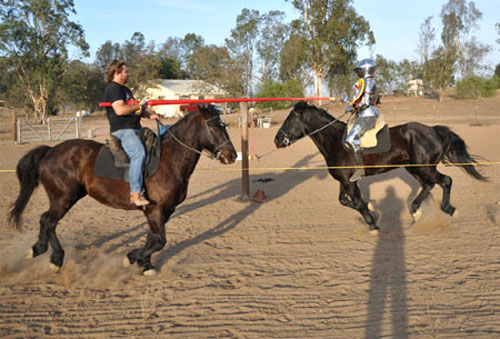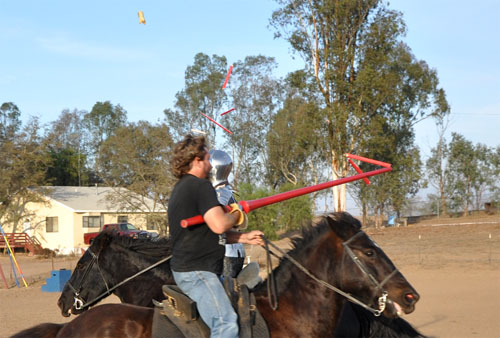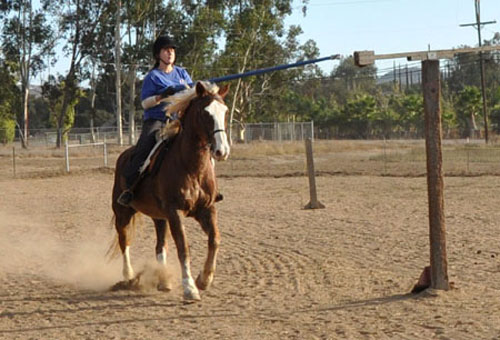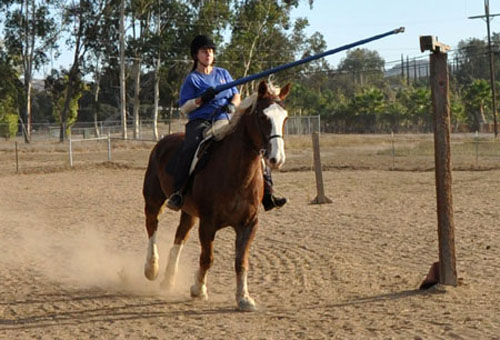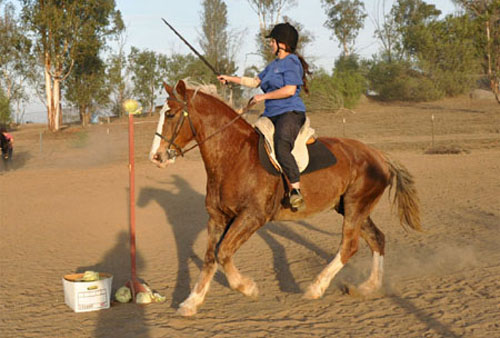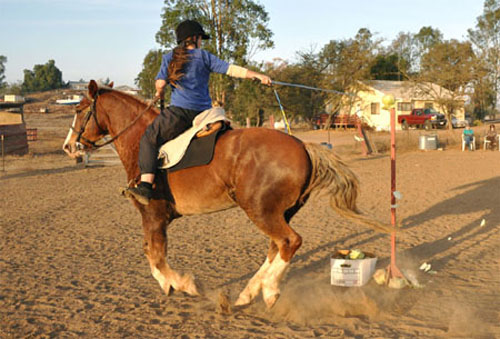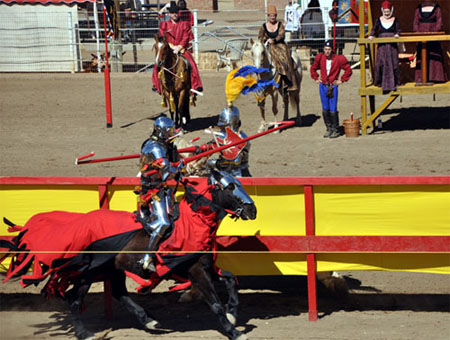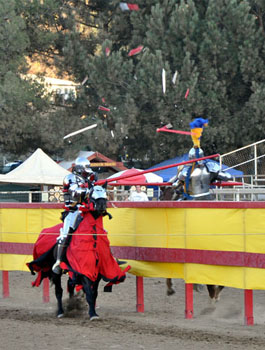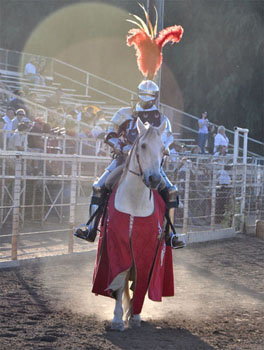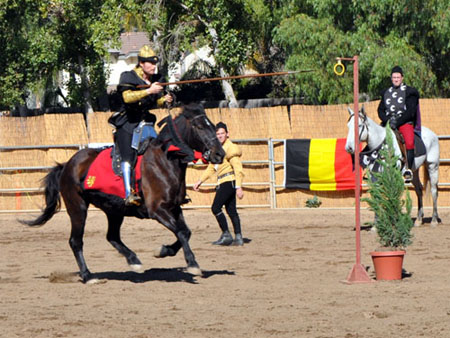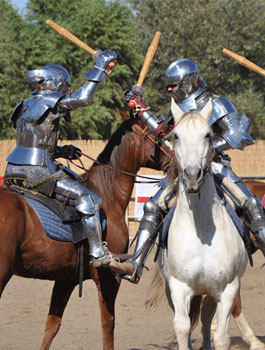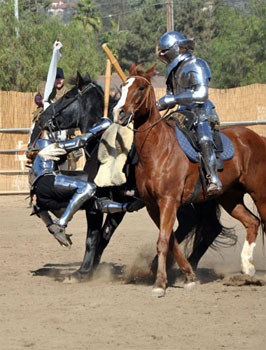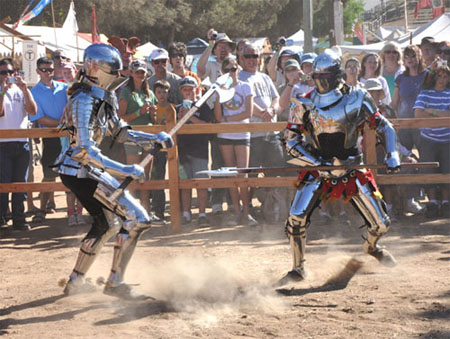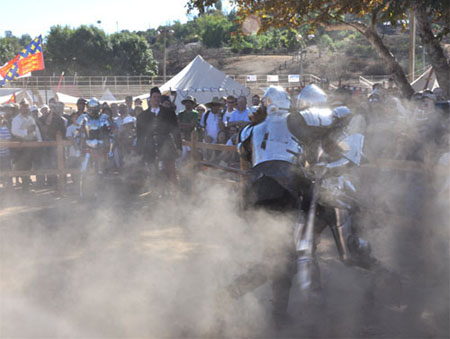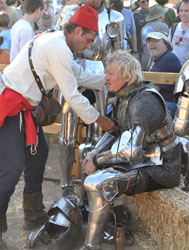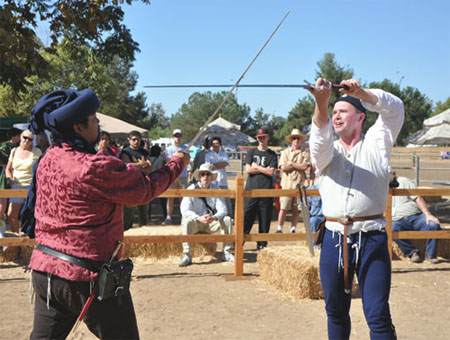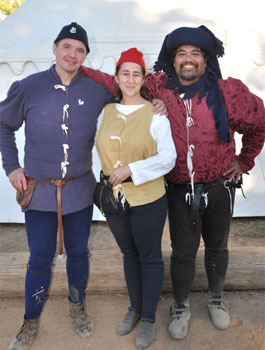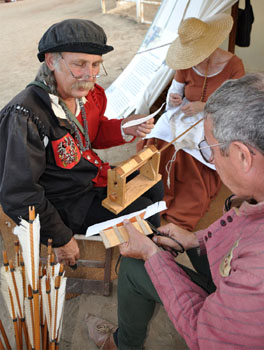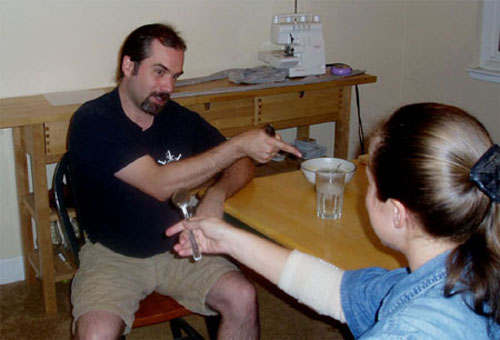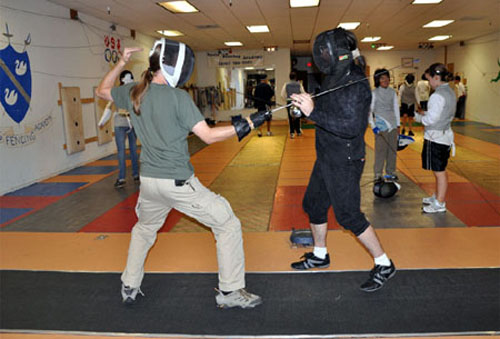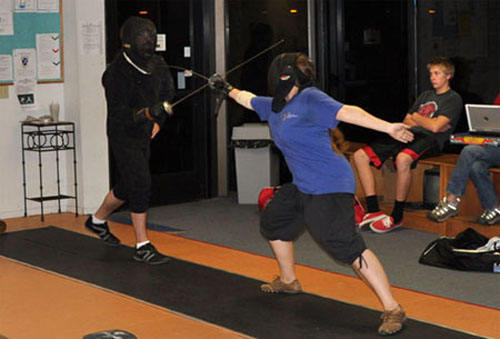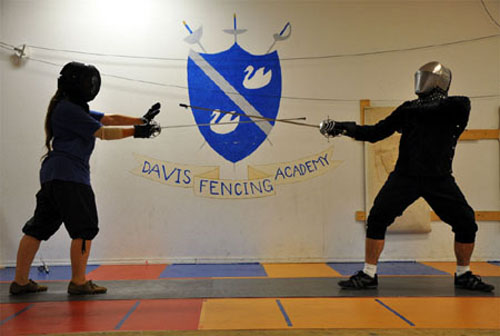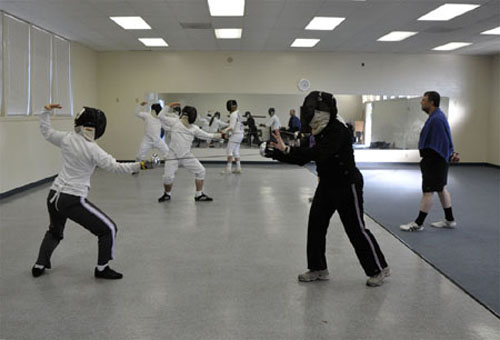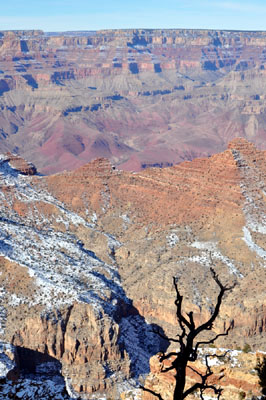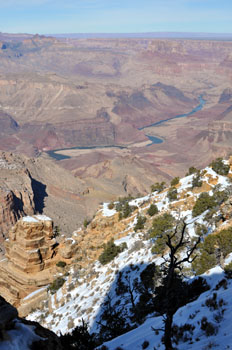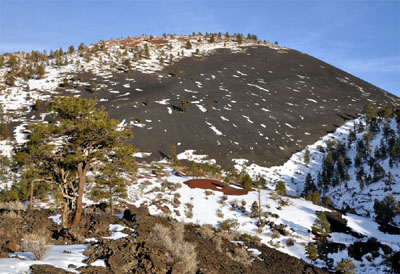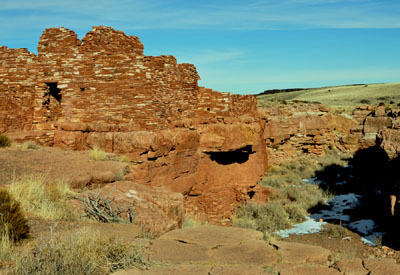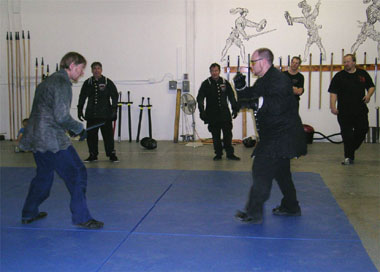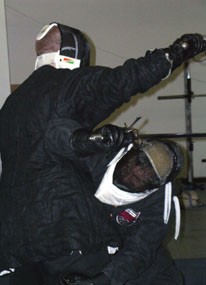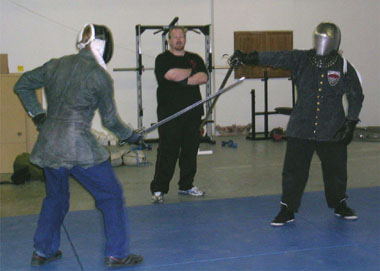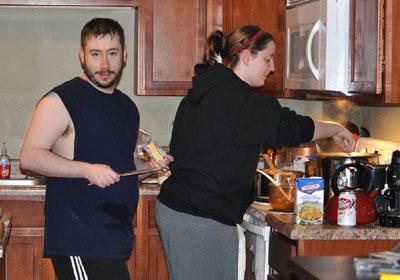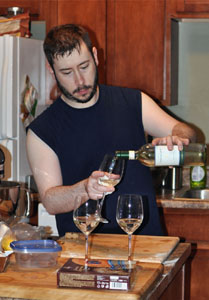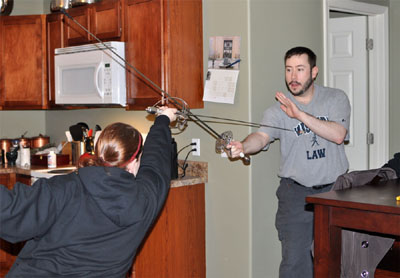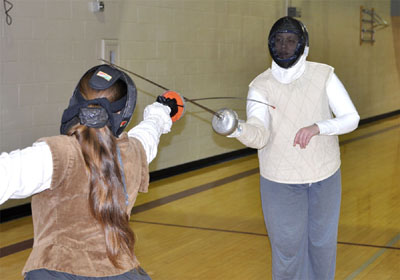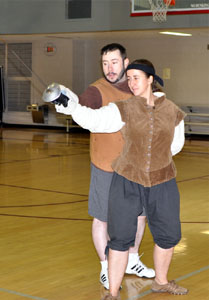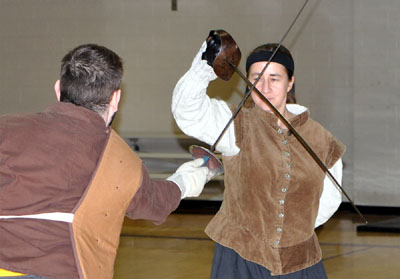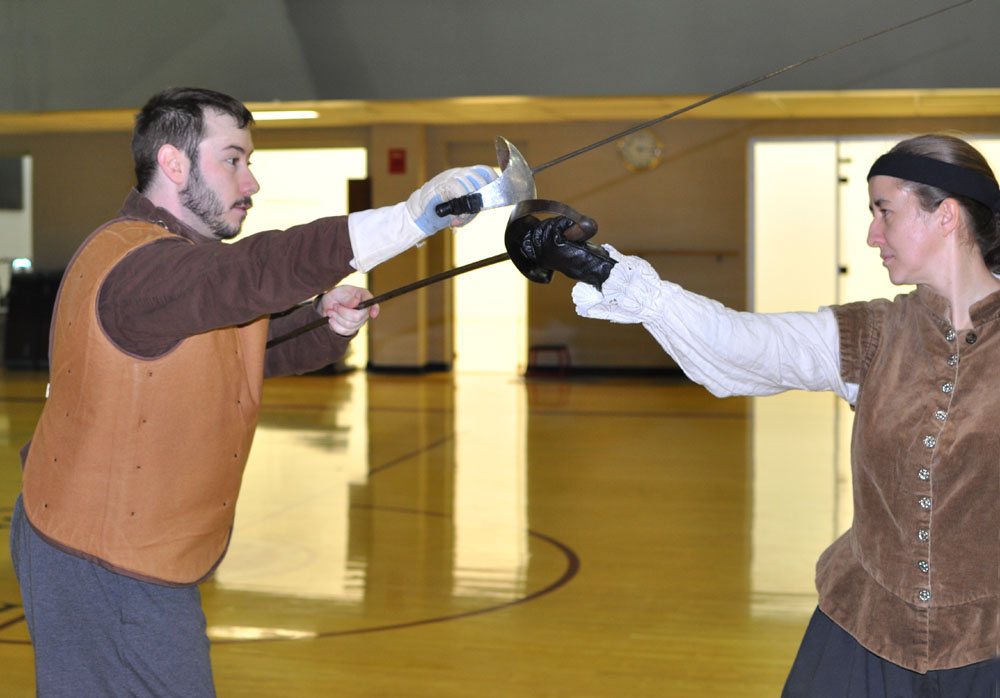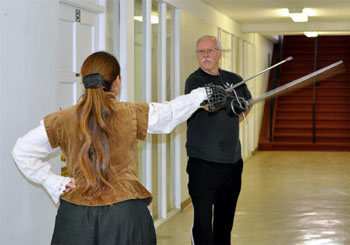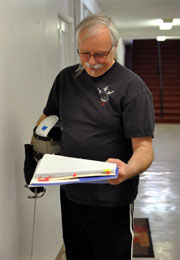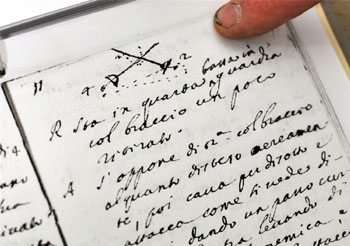|
At
the 2009 WMAW, the "San Jose
Maestri/guys," who must have heard of my
previous "Grand
Journey," wondered if I was going to journey to
their area as well. When I said I totally could, Puck and Mary (Curtis) as
well as Kevin (Murakoshi) invited me to visit with them, to stay at their
house, and train together for some time. When we figured out a good time
also with Eric (Myers),
a whole daily practicing schedule was set up for me. When we first talked
about this my visit, I thought I would focus on historical swordsmanship, the
Montante and rapier in particular, during my stay. However, during the planning process, a
recommendation came within
both Puck’s and Eric’s emails that I should also visit both the currently
existing continuations of the "San Jose" program--Maestro and Maestra Sahm's
Fencing Masters Program in Santa Clara, and Maestro Sullins'
Fencing
Masters Certificate Program at Sonoma State
University.
Since Kevin had told me that the programs' graduates who live in the area
sometimes go and help out
during the sessions, I was happy to originally plan on coming along
while “hiding behind” them and watching. When they also suggested that
I write to Maestra Sahm and Maestro Sullins so that the Maestri can prepare for
my visit, I thought that would indeed be polite. So I did. As
the arrangements progressed, however, it turned out that I was in fact to go alone,
thus not being able to “hide behind” anyone, and that my active
participation in the classes was assumed (thus my just watching was not
happening either). Well, this is how my showing up with my "proud" declaration
that I had no clue what I was doing came about.
It
was all the "San Jose guys'" "fault." It
was also the "fault" of Tom (Leoni), who, together with Steve
(Reich), had good things to say about the FMP. Tom told me already during one of my earlier
visits with him that
the Fencing Masters Program was "the place to be." I
am not sure whether he said it was the place to be for students of our
kind of martial arts, or whether teaching was mentioned as well. I was not
worried about any of that back then. I totally missed Tom's hint because I was not
even imagining how his statement could apply to me whatsoever. When he was telling me how much
he learned in the program, I
was just thinking: "Good for you!" Then, at the WMAW 2009, however, I
"caught" Tom telling one of the "San Jose guys:"
"Antonie is very good, she will be teaching in no time." I went
like: "Tom, do not give them any ideas!" But it was late anyway.
It turned out that by then, they had come up with their own ideas in this
regard, especially during their Fencing Pedagogy class.
I was almost not
even involved in this class either. I totally ignored it in 2007, but when
the same class was announced within the 2009 WMAW schedule again, I begun thinking:
Should I indeed go back to the Czech Republic in some two years, this may
be my last opportunity to check out the "San Jose" Fencing Pedagogy
stuff. And since people do not practice the American WMA way in the Czech
Republic, should I wish to still play there this way, I might have to do so with my
students. But, since the WMAW Fencing Pedagogy class was explicitly for people who either teach or
want to teach, I thought that already my showing up there would look too arrogant.
Thus, I instead asked if I could just audit the class, although then I
found an
adventurous solution. I registered for the first half of the course, which
consisted of the participants taking lessons. Then, I told Puck (who was
in charge of our rapier section) that I was going to be gone from the
second half of the class, where participants were to give the same
lessons. And then I run. I run so fast in fact that I forgot most of my stuff
behind...
On this my run, I went to Steve (Reich's) Bolognese
Swordsmanship course that was to begin concurrently. However, Steve sent me off, saying that I did not need to be in
his session--that is unless I wanted to teach it. With his typical sideways look, a smile on his face, and little stars in
his eyes, Steve said he was sure I
could teach his class (he was not kidding; the other time when I said I
was looking forward to seeing Steve's Bolognese book in print, he also
replied: "Why? You have no need for the book, as there will be
nothing in it that you do not know!") So I promptly left Steve's class,
although with the
sinking feeling that no amount of hiding is going to help me in the long
run. Somewhat later then, I sneaked back to the Fencing Pedagogy class to get my
left behind gear.
However, Kevin
caught me there, welcoming me back to class, and wondering where I was (I
had informed Puck, but not Kevin, of my panicking run). So I gave up
running and tried that...
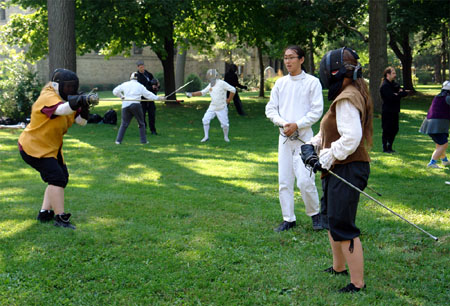
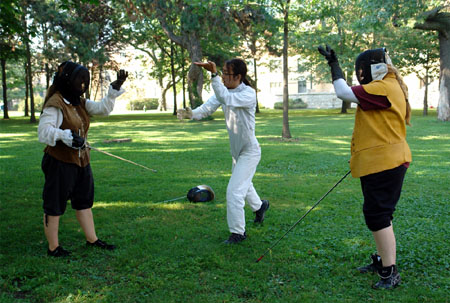
After all, this whole story very
much reminds me of another one that transpired at the University of
Chicago. When I was in the second year of my Ph.D. studies, the chairman
of our department asked me one day if I had seen the announcement
concerning an open teaching position. I said I certainly had, but I
deleted it right away, as the announcement clearly specified that student in the
fourth year of their Ph.D. studies, or more advanced ones, should apply.
In addition to being only in my second year back then, I also learned English
practically only after coming to the U.S. for my education, and I had no
teaching experience whatsoever. However, the chairman wanted me to try
anyway. Since it was a kind of a honor to be asked this way, I thought it
would not be even polite to refuse, therefore I indeed tried. I thought
that in case it does not work out, I could after all always blame it on the chairman
:-). By now, I have been teaching
at the university for four years, and both the department and my
students seem to be quite happy about that. Even I actually found teaching
to be a lot of fun (in addition to being rewarding and all
that).
Anyway, so I happily accepted Puck's, Kevin's, and
Eric's invitation to train with them, and I planned a ten-day visit to fit
just right in between the Tournament of the Phoenix and my Knight School
training session. And how do things
work in
“fencing heaven”? Unless you want to go elsewhere for the whole day or
evening (like to The Sahms or Maestro Sullins' classes), you have
lessons at the Davis Fencing Academy each evening. When you are at Eric’s house,
fencing in his orchard until in gets dark, you can still get your Davis
lessons subsequently. These include 1.) CapoFerro rapier or rapier and dagger,
2.) Classical
Italian foil, and then the surprise--3.) Fencing Pedagogy. And there even
are detailed handouts
each evening. And the best thing? You can make a request in the morning
concerning your next desired lesson topic, say "dagger
blade seizures and parries combined with feints," and you get that lesson the
same evening.
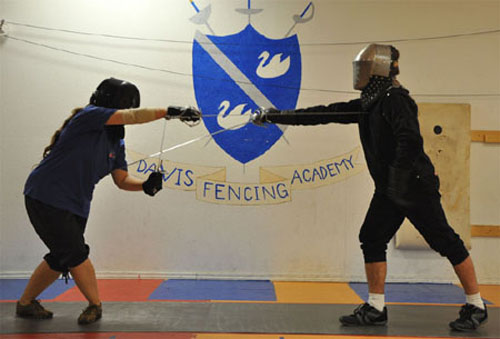
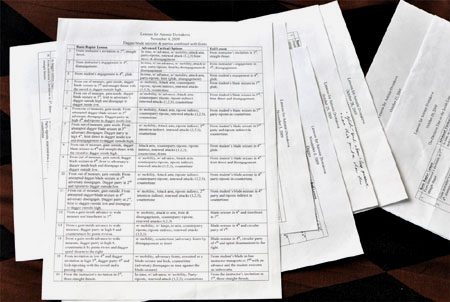
For further illustration, a CapoFerro sword+dagger
disarmament: a) as set up "pretty," and b) as completed "in action."
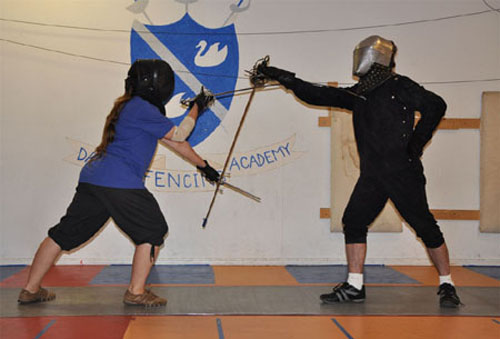
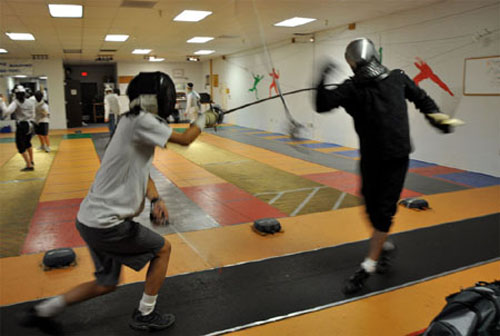
A further very important thing
about "fencing heaven" is that Tuesdays and
Sundays are two-handed sword days there. We were meeting with Eric Myers
in his olive orchard to work on plays from his (with Steve Hick)
translation of Memorial
of the Practice of the Montante by Diogo Gomes de Figueyredo. Eric was
also very patient with respect to helping with Steve Hick's plays from
their 2009
WMAW handout. (Please, note that this version of the handout is
modified, the first column always representing the original while the
second column shows how I was at first "translating" the plays
into the "Spadone language" :-). However, as soon as Eric's
translation became available, I begun using that, as one should indeed work on each
respective material using the corresponding terminology ;-). (Eric
offered to help with my Classical Fencing exploration as well, but
I asked him to do just more Montante with me instead).
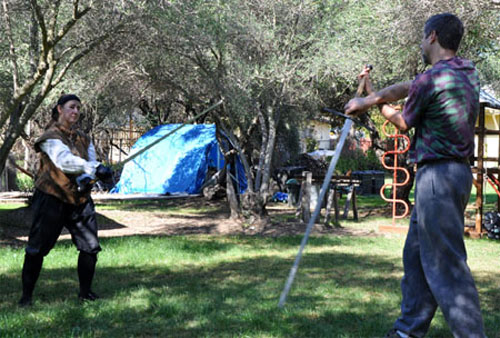
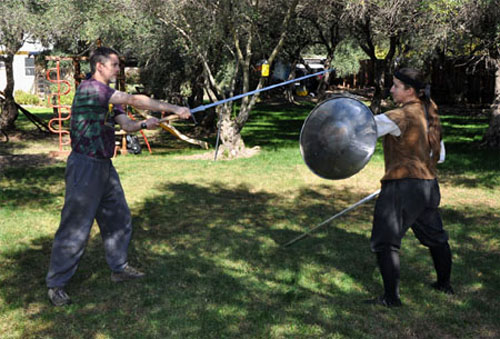
You have guessed that in addition to other
weapons, a lot
of sabre work was happening in Maestro Sullins' Fencing Pedagogy
Certificate Program at the Sonoma State University. Pictured are Maestro
Sullins and Bill first fighting, and then analyzing a certain part of the
bout. When I have gotten my first ever sabre lesson from Maestro Sullins,
and subsequently commented on now being able to proudly claim that I have
held a sabre once, Maestro Sullins noted that since I have received my
lesson from him, it in fact counts as ten lessons. (When I subsequently
narrated this story of "why be shy" role-model over a dinner,
another Maestro commented that it was probably totally true. :-) But guess
what--we have done no footwork exercises. This was because we were first
waiting for one student who was supposed to show up, which time I happily
filled with my questions, and then it was time to proceed to other stuff. But,
hey, that is still zero footwork exercises the whole Saturday at Maestro
Sullins'! :-)
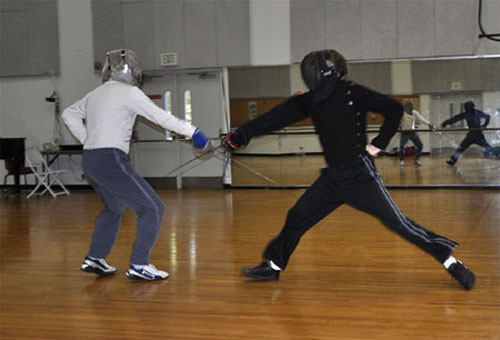
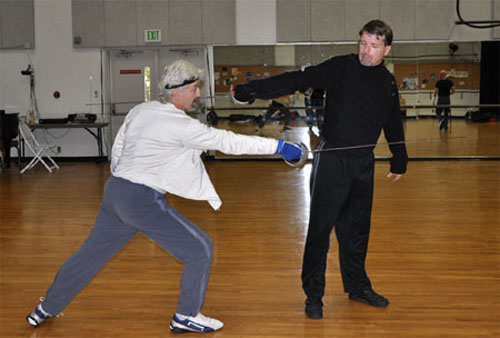
In the historical portion of the Fencing Pedagogy
Certificate Program session, Richard suggested that we do Bolognese in
honor of the guest (me). And so we did. Then, I have gotten in the car and
drove south. When I had met with Maestra Sahm the previous day, she said
it would be OK for me to come late on Saturday. While Maestro Sullins'
classes begin in the morning, the Sahms' Fencing Masters Program sessions
at Santa Clara University begin after noon, and it is only some two hours
drive from Sonoma to Santa Clara (well, in traffic, it is really more like
three hours...).
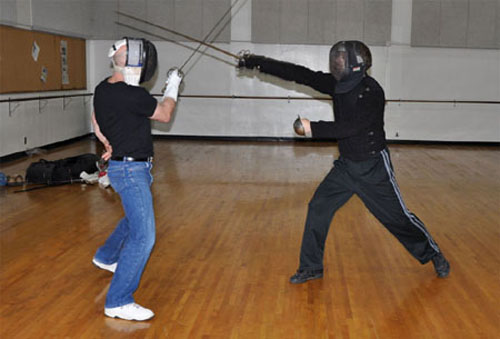
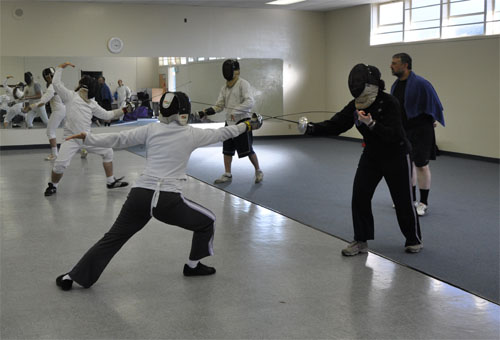
Speaking of pedagogy, Puck
has an exceptional ability to not
only make people do things that confuse them, but even feel comfortable doing so. Additionally, he has the greatest patience
making people do things they never even thought they could do. Speaking of
which, Tom (Leoni) uses a "trick" where he tells
others that I can do this or that, which means that I then have
to just do it so that Tom does not look like a "liar." Puck has perfected this "trick" by publishing in a newspaper article
actual pictorial
"evidence" concerning me teaching. (For the whole article, click
here.) 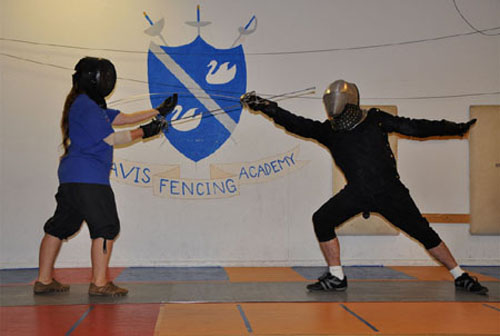
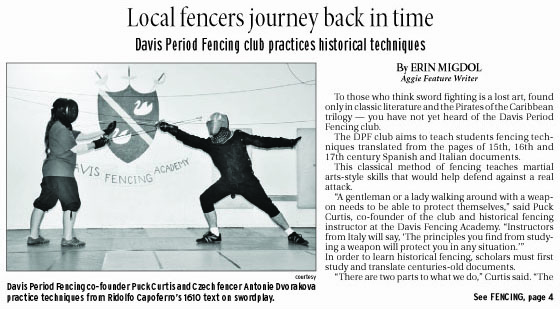
By the time Scott (Aldinger) has arrived at Davis, which was the
first stop of his then "Pilgrimage of the Sword," I have given
up on panicking about my learning how to teach, and I rather just did it.
Scott was very patient and generous about becoming my experimental
student.
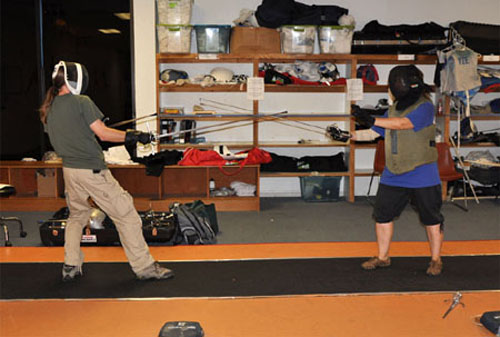
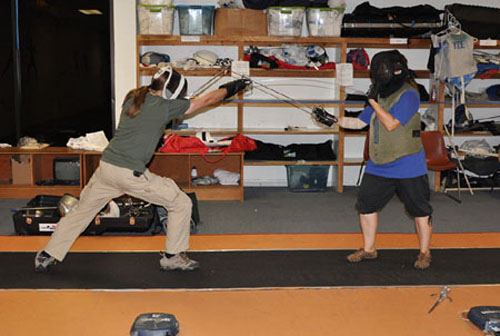
Puck applies his talent for making people do new
things also in life in general. That is how I run out of excuses against
becoming a part of the "Ponytail Beatles Rock Band" :-).
The second photo features our "vepro-knedlo-zelo" dinner in
Czech national style, with not only Puck, Mary, and Kevin, but also Dori
and David, who also study in the FMP.
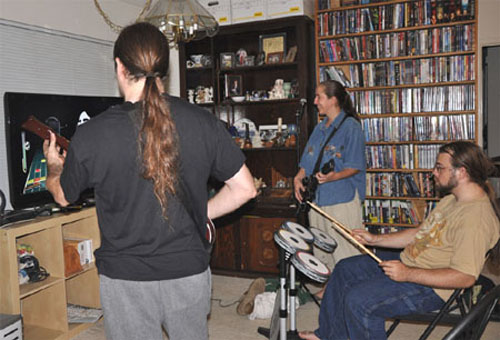
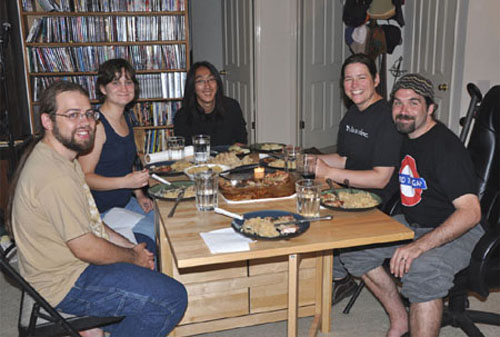
When I was trying to take the perfect "There
is Nothing Like Studying in the Sunny California" photo designed to
allow especially the frozen Chicagoans to be envious with respect to the
California weather, the first picture shows how it always ended up. Still, please,
note the citrus tree and the lush green lawn. The sword in the background,
then, is Puck's Montante, which was even more appropriate to the task at
hand than is my Spadone. The second picture documents how I eventually
managed to train Kevin's dog to hide when people are swinging honking big
swords in the backyard. In fact, all it took was speaking to the dog in
Japanese :-). Why? Because Kevin is all Japanese all the time--see the
third picture. No, this does not mean that he dresses this way all the
time, and it does not mean that I have gotten to learn some katana in
addition to everything either :-) (although wait; no, just kidding...).
But everyone in Kevin's family, four
generations back, is Japanese. Now, Puck's dog only obeys commands in
Spanish, but Puck's dog is really a cow anyway... (see
here :-).
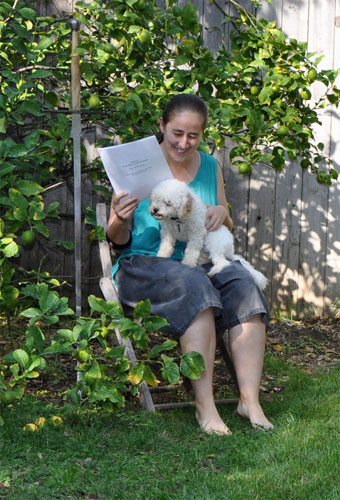
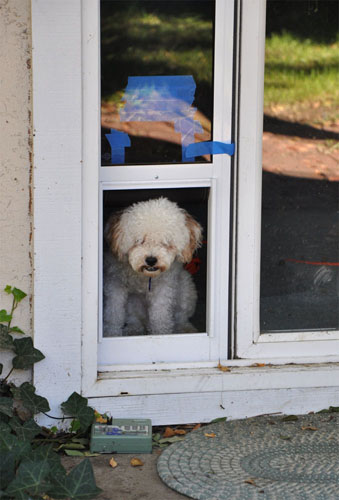
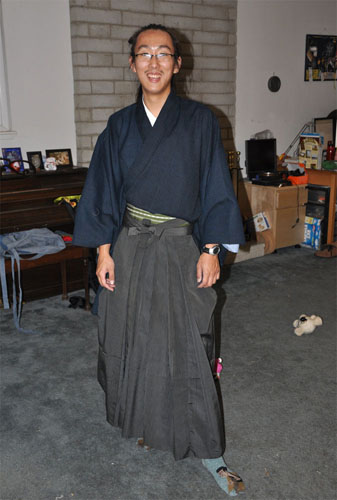
Further, Maestro Sullins invited me
also to the San Francisco club where he teaches. In addition to trying out
some Bartitsu and Saviolo's Rapier there, I was introduced by Tom Badillo
and his friends to the formal judging of fencing bouts. Finally, I got to do
a bit of the touristy stuff as well (the following three pictures being
taken in San Diego).
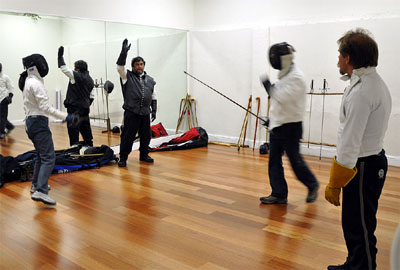
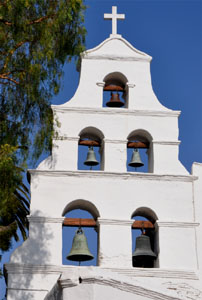
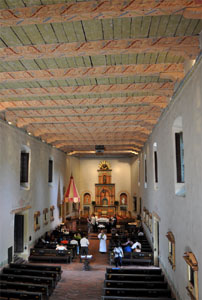
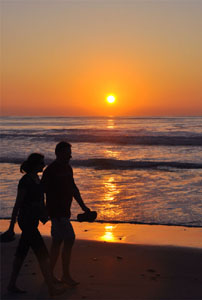
It still took four Maestri to persuade
me
that I did indeed need a white fencing jacket, together with one Kevin
getting
involved
to find me such jacket
for cheap in a local store so that I purchase it before I change my mind,
but the rest is history...
To conclude with, I know that Alexandria, VA is
not exactly along the way from Davis, CA to Chicago, IL. However, since my
little red car does not make a big deal out of a couple of extra days of
driving, and since a good time for another visit of mine with Tom and
Steve was to be when Tom gets done with his Octoberfests music
engagements, I practically extended my 2009 California
visit into a coast-to-coast journey. When I thus reported in Alexandria
what I have just done in the Bay Area, my "complaining" that I
may be joining the Fencing Masters Program helped me none, however. Quite
the contrary. Tom said that
was the whole point of why he brought up the program to my attention
already almost a year prior to that (even as I completely missed his hint then). Then Tom proceeded telling me his whole story of why
he really thought I in particular should indeed be joining the Fencing Masters Program. After
this his explanation, it would not be even polite to make further fuss.
Thus, this report
continues...
|
